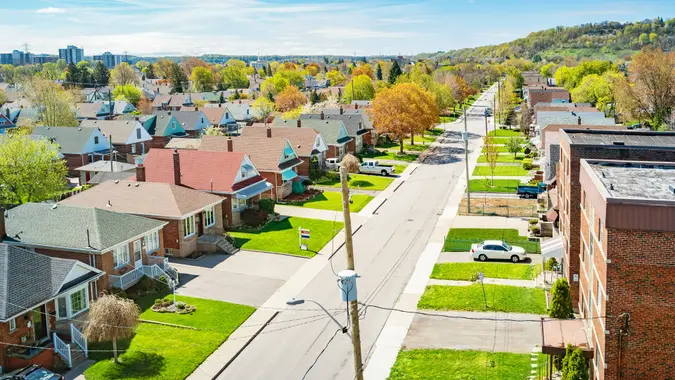Government Shutdown vs. Debt Ceiling: What’s the Difference?

Commitment to Our Readers
GOBankingRates' editorial team is committed to bringing you unbiased reviews and information. We use data-driven methodologies to evaluate financial products and services - our reviews and ratings are not influenced by advertisers. You can read more about our editorial guidelines and our products and services review methodology.

20 Years
Helping You Live Richer

Reviewed
by Experts

Trusted by
Millions of Readers
The Treasury Department told congressional leaders on Thursday, Jan. 19, that the U.S. has reached its debt limit. Treasury Secretary Janet Yellen has begun taking what she called “extraordinary measures” to keep the government from defaulting on loans and maintain other financial obligations. This latest development prompts the question: What exactly does hitting the debt ceiling mean and how does it differ from a government shutdown?
What is a Government Shutdown?
A government shutdown results from a failure to finance government expenditures for the upcoming fiscal year. Every year, Congress has to decide how to spend the government’s money, and how to allocate this spending. Should Congress not be able to come to an agreement, portions of the government will not be funded. Certain government workers like park employees and part-time government employees are often first to be cut, as are federally funded environmental and wildlife agencies.
While the potential threat of a government shutdown seems to be an annual occurrence in recent years, Congress usually — though not always — finds a solution, even if temporary. This is not to say that such a shutdown has never occurred: the most recent shutdown was a mere three years ago under President Donald Trump. That shutdown began at midnight on Dec. 22, 2018, and lasted until Jan. 25, 2019. The said shutdown lasted 35 days and was the longest government shutdown in U.S. history thus far.
Government shutdowns are sometimes perceived by the public as actions related to political infighting — a means for partisan politicians to push their own specific agendas. The most recent shutdown had concrete consequences, however, as 95% of federal staff working for the USDA’s Food and Nutrition Services were furloughed.
Dr. Scott Gottlieb, FDA commissioner at the time of the shutdown, announced that the FDA had suspended certain food inspections as a result, per CNBC. During the shutdown, two new recalls for food products contaminated with Listeria or Salmonella were issued. Those inspectors who had to continue to work — particularly meat and egg inspectors — continued doing so without regular pay. Various school jurisdictions also began to ration food as administrators raised concerns over feeding children who relied on school lunches for their daily meals.
The Congressional Budget Office estimated that the shutdown of 2018-2019 reduced economic growth in the final three months of 2018 by $3 billion. Another shutdown in the midst of a pandemic could seriously damage both the U.S. and global economies.
What is the Debt Ceiling?
The debt ceiling is the amount of money the U.S. government is legally allowed to borrow in order to pay its bills on pre-existing debt.
Pre-existing is the important term here, as it indicates that the government needs new financing, i.e. more loans, in order to pay long-standing debt. Government debt is used to pay for things like Medicare, tax credits and food stamps, among many other enterprises funded at the federal level.
During the pandemic, historic loans were taken out to pay for things like stimulus checks and advance payments on child tax credits.
The U.S. government has never defaulted on its debt and is considered one of the most credit-worthy nations in the world. The inability to make good on its outstanding debt could plunge the U.S. economy into a deep recession — such a move would spur economic ramifications for years to come.
In sum, Congress will need to pass a decision to increase the debt limit, or ceiling, in order to pay off loans it has already taken out.
More From GOBankingRates
 Written by
Written by  Edited by
Edited by 

























